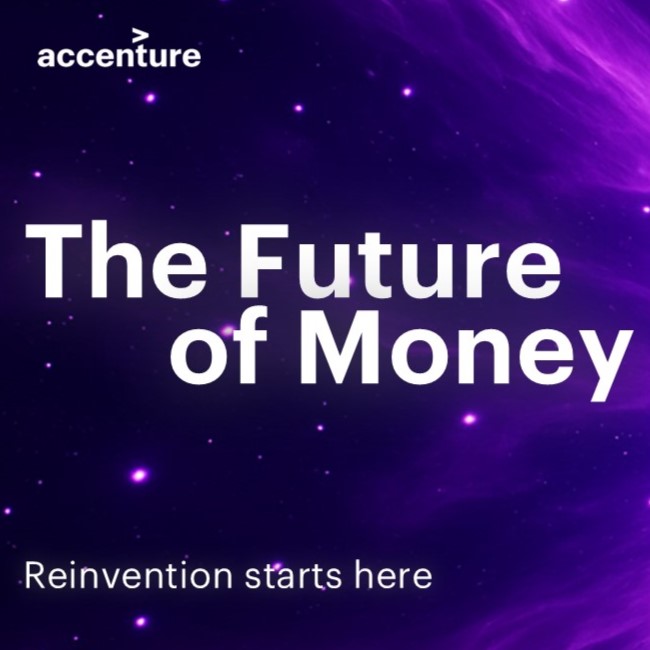Each year, Sibos brings together banks, fintechs, regulators and infrastructure providers to discuss the forces shaping money movement. Sibos 2025, held in Frankfurt, marked a turning point where buzzwords like stablecoins, blockchain, interoperability, agentics and AI became practical blueprints for the next phase of global payments.
If Sibos 2024 was about modernization, Sibos 2025 was about leaping to the future— aiming to connect systems, standards, and ecosystems to make global finance faster, safer and smarter.

Download our executive summary on the Future of Money research
Learn MoreHere are my top takeaways from the event:
1. Stablecoin dominance stemming from North America
Evident at Sibos was the market’s rally around stablecoins. Central Banks are strategically evaluating Central Bank Digital Currencies (CBDCs) and the complexities they come with. But stablecoins are seeing rapid adoption in North America and have offered to be a ready-made alternative. Other geographies, like Europe, are seeing an emergence of consortiums to issue Euro stablecoins.
Sibos discussions reflected that stablecoins are fast becoming the market’s preferred vehicle for digital settlement, bridging traditional finance and decentralized networks. They offer flexibility, interoperability and growing institutional trust, making them a popular choice for cross-border transactions.
While the CBDC ecosystem is still evolving and the market is moving towards stablecoins, I feel that in the long run, CBDCs will coexist with stablecoins and serve as a sovereign anchor that reinforces monetary stability and public trust. Together, the two represent complementary paths toward digital value with one being market-led and the other being policy-driven.
2. Tokenization and the rise of digital currencies
In our recent global Future of Money survey of more than 200 financial institutions (FIs), payment service providers and 200 corporate clients, we found that 87% of FIs are exploring tokenization and tokenized deposits as complementary tools, to issue digital versions of traditional assets, thereby improving liquidity and settlement flexibility.
As expected, tokenization also dominated several panels at Sibos with topics ranging from real-world assets to deposits and securities. Tokenized deposits have the capability to move instantly between institutions, reducing counterparty risk settlement and maintaining a leveraged banking business model.
One of the key talking points, amidst the changing landscape around CBDCs and stablecoins, was how banks are finding themselves at crossroads as to which technology will stay relevant and is worth investing in, and which is not. This uncertainty, compounded by fragmented regulation, has driven most banks to take a measured path from strategic evaluation to selective investment. A choice that most banks are making though is to invest in tokenized deposits.
Tokenized deposits are allowing banks to leverage upon the existing infrastructure, while being able to safely experiment with digital value transfer and programmability. The major shift that we see here is that banks are increasingly looking to co-build with technology firms in this evolving landscape, to remain ready for whichever digital currency model prevails.
My key takeaway? Tokenization isn’t about new assets. It is instead about new efficiency in old ones. By embedding digital identifiers, ownership records and compliance attributes into assets themselves, tokenization promises to collapse complex settlement chains into simple transactions all within the existing banking infrastructure.
3. SWIFT’s blockchain ledger: Reimagining cross-border
Cross-border payments are the top use case for the application of digital currencies, according to 83% of surveyed financial institutions.
However, cross-border payments, in today’s digital world, remain highly fragmented, sometimes slow and costly. Multiple intermediaries, time-zone gaps and complex compliance checks create friction as global trade demands real-time settlement.
At Sibos, Swift announced their blockchain-based shared ledger tackling these inefficiencies. It introduced a real-time, always-on settlement layer for all cross-border transactions.
The hybrid design combines blockchain transparency with regulatory governance enabling 24/7 settlement while ensuring that transactions are traceable, auditable and importantly, secure through embedded compliance.
Given the fact that it was developed with ConsenSys and over 30 financial institutions across 16 countries, I think it showcases the collaborative nature of today’s innovation. This is looking to preserve Swift’s reach and reliability and at the same time unlock speed, efficiency and programmability of Distributed Ledger Technology.
4. Regulation steps into the spotlight as an enabler
Regulatory uncertainty is cited by 72% of surveyed FIs as a top challenge for offering digital currencies to clients. However, at Sibos 2025, regulation was viewed as a strategic accelerator, and not just a constraint.
The common theme I noticed across sessions is that all industry players agree the path to adoption lies in clear, harmonized rules. This is also consistent with EU’s MiCA framework and US’s GENIUS Act creating regulatory foundations for new-age digital assets.
I feel that regulatory developments and safeguards around CBDCs, stablecoins and tokenized deposits will shape the confidence for institutional players to enter the digital asset space. Regulators are helping integrate digital money into the real economy and not remain on its periphery.
5. Preparing for a surge in financial fraud
According to our research, 78% of FIs believe that fraud will surge with an increase in agentic payments. Rise in digital and AI-driven payments will inevitably lead with new digital currencies presenting fresh vulnerabilities that can be exploited.
However, banks are proactively responding by strengthening fraud prevention mechanisms through AI-powered fraud detection systems capable of spotting anomalies and preventing emerging threats.
From my discussions at Sibos, banks and fintech partners are working together to bring innovation and specialized expertise to strengthen these fraud controls, while working with regulators to ensure new payment technologies meet evolving global standards. The path forward lies in creating systems that are not only digital and intelligent but also secure, transparent and resilient by design.
6. Agentic payments and commerce emerging at speed
Sibos 2025 was a true reflection of how AI is the next layer of intelligence of the financial ecosystem. From chatbots and fraud alerts, AI has now transitioned into an embedded capability in payments infrastructure with pattern recognition, liquidity prediction and automated exception handling. This aligns with our research, which found 79% of FIs exploring agentic payments and moving beyond the research phase.
However, with increased autonomy comes the questions around privacy, ethics and accountability. Banks are being forced to rethink their role with a goal to find the balance between innovation, accountability and the trust that underpins financial systems. Many banking leaders are experimenting with AI-powered transaction models that emphasize robust authentication, ethical data use and explainability, in line with the growing cyber threats.
The one thing that all leaders at Sibos agreed upon was that success in agentic payments will hinge on the ability to combine intelligence with integrity and the capability to deliver AI-enabled experiences that are secure, transparent and worthy of customer trust. See my previous post for more on agentic payments and commerce.
The Future: Shifting from disruption to orchestration
As Sibos 2025 closed, one theme that was common across panels and conversations was that the era of a solo player disrupting the financial ecosystem is over. The future of innovation is now through collaboration and here are some parting thoughts on that:
-
- Instead of competing infrastructures, industry should be coalescing in building networks which are interoperable, data-driven and secure.
- Blockchain and AI are no longer seen as existential threats to traditional finance and are instead their extensions.
- Regulators aren’t slowing progress; they’re defining the boundaries that make innovation safe and scalable.
- SWIFT’s blockchain ledger, several stablecoin pilots and Bank for International Settlement’s cross-border frameworks all point to the same destination: A global financial system that is connected, compliant and continuous.
In addition to the takeaways from Sibos, there is more to learn from our new Future of Money research findings. Download our executive summary and if you would like a deeper discussion, please reach out.











